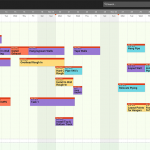If you already understand the broad terms of what Lean is, then we can get into specifics and look at the six guiding principles of Lean. Remember that the goal of the system is to increase efficiency by reducing waste. We accomplish our money saving goals by improving the means to our ends. These principles outline the necessary steps for creating the right means to create the right end result. They serve as a step-by-step path to most efficiently implement Lean principles in your business. And you want to implement Lean principles because they save you money.
Identify Customer Value
Lean management starts with identifying the task and the program value. The customer assigns value and we move forward attempting to maximize their value as efficiently as possible. When you start with customer-assigned value, you are better able to streamline the process needed to meet customer goals.
Identify the Path
Knowing what outcome the customer wants allows you to map out the steps required to reach the customer’s goal. When you take the time to identify all of the places where work stoppages might occur, potential bottlenecks can be avoided. Doing this minimizes and/or eliminates any extra steps that waste your time and money.
Smooth the Path
Now that you know where problems are likely to occur, you can plan ways to avoid running into those problems. You make sure that the work steps flow from one to another in a streamlined manner.
Pull the Plan
Project milestones are identified and assigned a completion date. Project planning is done backwards to make sure that goals will be met by that date. Pulling the plan allows for everyone to ensure they will have what they need to do their work when they need it, and that no one is holding up the progress of another team member.
Perfect the Plan
No plan will be perfect, but that doesn’t mean that you shouldn’t always keep improving and moving toward perfection. Lean encourages a continuous refinement of the planning process. It does so by making mistakes visible to everyone using the system and by prioritizing those mistakes that are the biggest impediment to a smooth plan.
Respect
Respect all the participants in your Lean program. The most important resource for identifying and fixing problems are your hard-working employees on the front line.
Are you in construction? Are you interested in using these principles to save your business time and money? Do you want to eliminate work stoppages and missed deadlines? Construction companies can particularly benefit from implementing Lean practices on their jobsites. How does Lean work in practice for the construction industry?










